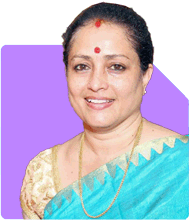How Can I Overcome My Deep Insecurities?
Anu Krishna |1639 Answers |Ask -Follow
Relationships Expert, Mind Coach - Answered on Dec 04, 2024
The co-founder of Unfear Changemakers LLP, she has received her neuro linguistic programming training from National Federation of NeuroLinguistic Programming, USA, and her energy work specialisation from the Institute for Inner Studies, Manila.
She is an executive member of the Indian Association of Adolescent Health.... more

Hello Anu, I want to talk about my something that has been bothering for a long time now. I am 28 years old now. I had immense body image problem as a child because I was often made fun of because of my obesity. With time I became active in school, participating in various events and was good at studies. When I was about 15 years old I started to experience hair loss as well but not too noticeable at the time. After the 1st semester in college I was able to shed excess weight and I started to feel good about how I looked, but the hair loss also continued and my confidence took a massive hit. I also found it quite difficult to commit to a relationship because I was afraid how others would perceive me and I would not be able to handle it. I was not able to keep myself happy so how could I keep someone else happy. Over the years I have kept myself occupied with my job and tried to be as social as I can be, but there has never been a moment where I could just switch off the feeling of being bothered by my hair loss, I did not let go of what I wanted to be, I just wanted to have a time where I would not be made fun of. I was quite sensitive emotionally and this aggravated after hair loss. I always feel that I could not enjoy my teenage life the way I wanted because of something that I don't know how it started. It's frustrating. I feel this huge gap between how am I supposed to be at my current age and what I actually feel as a person right now. Although I have tried to introspect even more this year and tried to accept that I will just have to find a match with what I have, I just don't understand how should I approach this. Sometimes I simulate it as business deal. My hair loss is not really something that a partner may be looking forward to. I still feel like I am not 28 years old. I am not supposed to be like this at 28. I know that there are others out there in the world in my age group who have also experience this, but I feel so isolated here just like how I used to feel as a child when someone would make fun of my weight among a group of kids. What should I do?
It's misshapen identity...Ultimately the only person who can accept you for who you are, is YOU. People are always going to have something to say about the way you look, what you eat, how you speak...
So, building your identity has to come from you, within you.
- how do I see myself in the mirror?
- what words do I use when I describe myself?
- what happens when I meet people?
A few questions that will give you a reality check. Self-talk is so undermined and we are the first ones to put down ourselves. Obviously, there are parts of your personality that you have overlooked as you have only focused on hair loss. Maybe you have a beautiful smile or you can hold conversations at length.
Actually do this:
Make a questionnaire that will help you figure out what people think of you. Ask these to at least 15 people. You will see the gap between how you see yourself and how others see you. This will help you when you are actively seeking a life partner as you will approach the same thing with confidence and assurance.
And maybe you can see a doctor who can help you with regaining the lost hair. Yeah?
You feel isolated because of your self-talk; so, be kind to yourself.
All the best!
Anu Krishna
Mind Coach|NLP Trainer|Author
Drop in: www.unfear.io
Reach me: Facebook: anukrish07/ AND LinkedIn: anukrishna-joyofserving/
You may like to see similar questions and answers below
Dr Karthiyayini Mahadevan | Answer |Ask -Follow
General Physician - Answered on Jun 12, 2024
Anu Krishna |1639 Answers |Ask -Follow
Relationships Expert, Mind Coach - Answered on May 21, 2024
Anu Krishna |1639 Answers |Ask -Follow
Relationships Expert, Mind Coach - Answered on Oct 15, 2024
Anu Krishna |1639 Answers |Ask -Follow
Relationships Expert, Mind Coach - Answered on Dec 10, 2024
Nayagam P P |8385 Answers |Ask -Follow
Career Counsellor - Answered on Jul 09, 2025
Nayagam P P |8385 Answers |Ask -Follow
Career Counsellor - Answered on Jul 09, 2025
Nayagam P P |8385 Answers |Ask -Follow
Career Counsellor - Answered on Jul 09, 2025
Nayagam P P |8385 Answers |Ask -Follow
Career Counsellor - Answered on Jul 09, 2025
Nayagam P P |8385 Answers |Ask -Follow
Career Counsellor - Answered on Jul 09, 2025
Nayagam P P |8385 Answers |Ask -Follow
Career Counsellor - Answered on Jul 09, 2025
Nayagam P P |8385 Answers |Ask -Follow
Career Counsellor - Answered on Jul 09, 2025
Nayagam P P |8385 Answers |Ask -Follow
Career Counsellor - Answered on Jul 09, 2025
Nayagam P P |8385 Answers |Ask -Follow
Career Counsellor - Answered on Jul 09, 2025
Nayagam P P |8385 Answers |Ask -Follow
Career Counsellor - Answered on Jul 09, 2025

















